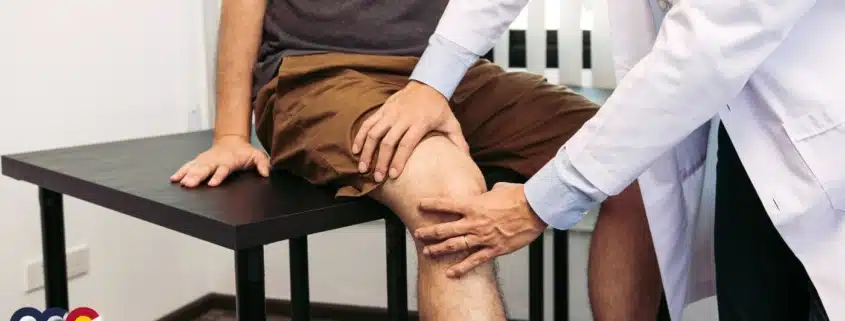Prepatellar Kneecap Bursitis
There is a good reason why prepatellar kneecap bursitis warrants an immediate medical evaluation and treatment by an experienced orthopedic doctor like those you’ll find at the Colorado Center of Orthopedic Excellence in Colorado Springs, Colorado. Untreated, prepatellar kneecap bursitis can develop severe complications that can put your whole life on pause. It can affect your ability to bend or straighten your knee. It can cause chronic inflammation and pain, long-term reduced use of the joint that can lead to decreased physical activity and loss of surrounding muscle. Prepatellar kneecap bursitis can develop infections that can lead to septic shock. Prepatellar kneecap bursitis can be serious. At Advanced Orthopedics, you’ll get serious help.
OVERVIEW
Prepatellar kneecap bursitis is the second most common type of bursitis. Anyone can get it, but more often it affects men between the ages of 40 and 60. The onset of prepatellar kneecap bursitis may be quick as a result of injury, while chronic symptoms may develop slowly over time. Chronic prepatellar bursitis most commonly affects people who have jobs or hobbies that involve frequent kneeling, such as carpentry, house cleaning, plumbing, and gardening. Children are more likely to develop septic prepatellar kneecap bursitis (an infection of the prepatellar bursa).
ABOUT THE KNEECAP
The knee is the joint where the bones of the lower and upper legs meet. The largest joint in the body, the knee moves like a hinge, allowing one to sit, squat, walk, or jump. The knee consists of three bones: the tibia, femur, and patella. The kneecap (patella) is a small triangular bone at the front of the knee that covers the knee joint itself. It is the anchor point for the patellar tendon and the bridge between the quadricep muscles and the lower leg. The kneecap provides leverage for the muscles as they bend and straighten the knee. It also protects the knee joint.
WHAT IS PREPATELLAR KNEECAP BURSITIS?
Prepatellar bursitis or kneecap bursitis is a condition characterized by inflammation of the bursa. There are several bursae (plural for bursa) in the knee joint, and the one commonly affected in patellar bursitis is the prepatellar bursa which is located in the front of the kneecap. A bursa is a small pad-like sac of fluid rich in protein and collagen. These small protective sacs look and act as pillows – cushioning pressure points between the bones and the tendons and muscles near joints. When the bursa sac is repeatedly irritated, damaged, or infected, its thin lining thickens and makes extra fluid. The extra fluid collects in the bursa sac and causes it to swell and put pressure on other parts of the knee. This is called “bursitis”. There are two types of the condition:
- Acute prepatellar bursitis happens when there is sudden damage to the bursa in front of the kneecap. This usually happens from trauma (such as a forceful impact to the knee) or an infection.
- Chronic prepatellar bursitis usually happens from repeated overuse or pressure to the knee such as frequent kneeling. The location and activities that may cause this are why prepatellar kneecap bursitis is also known as carpenter’s knee, housemaid’s knee, carpet layer’s knee, coal miner’s knee, plumber’s knee, and gardener’s knee.
Read more about Prepatellar Kneecap Bursitis on our new Colorado Springs Orthopedic News Site – Colorado Springs Orthopedic News. Schedule an appointment with a knee specialist today.

